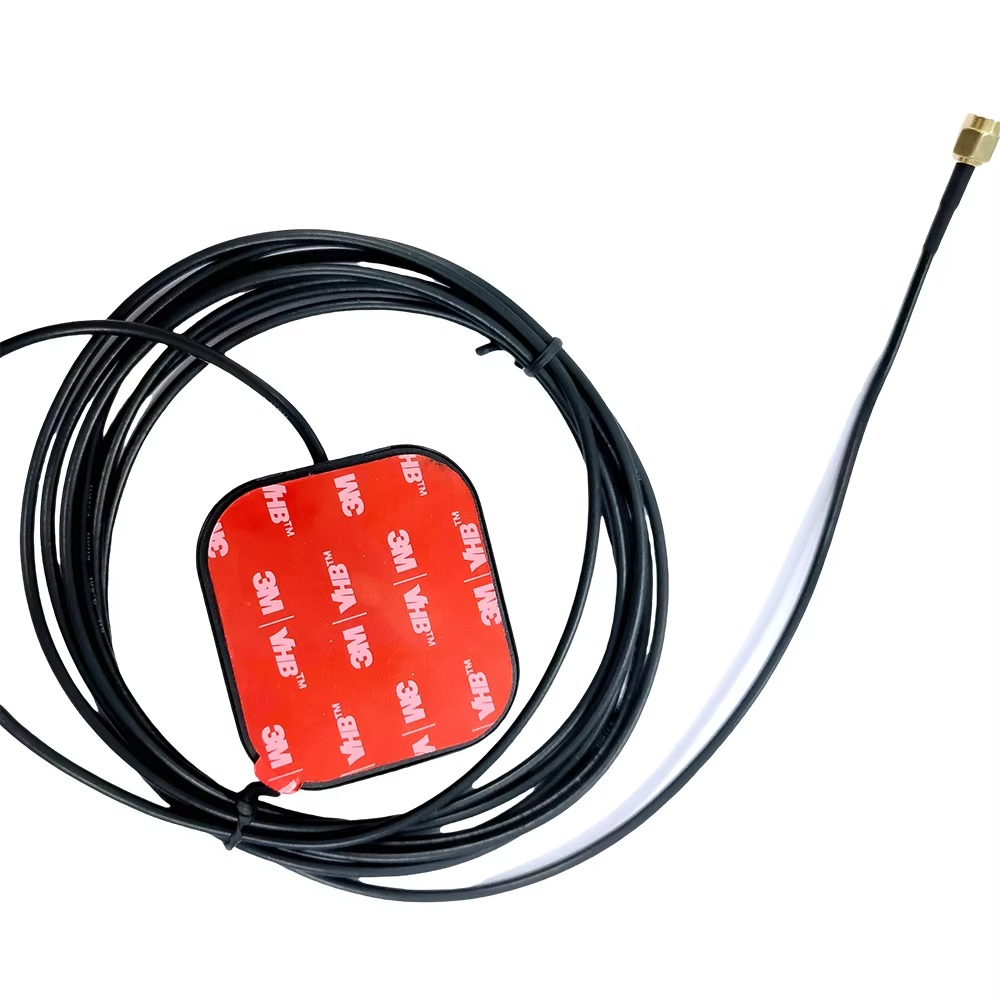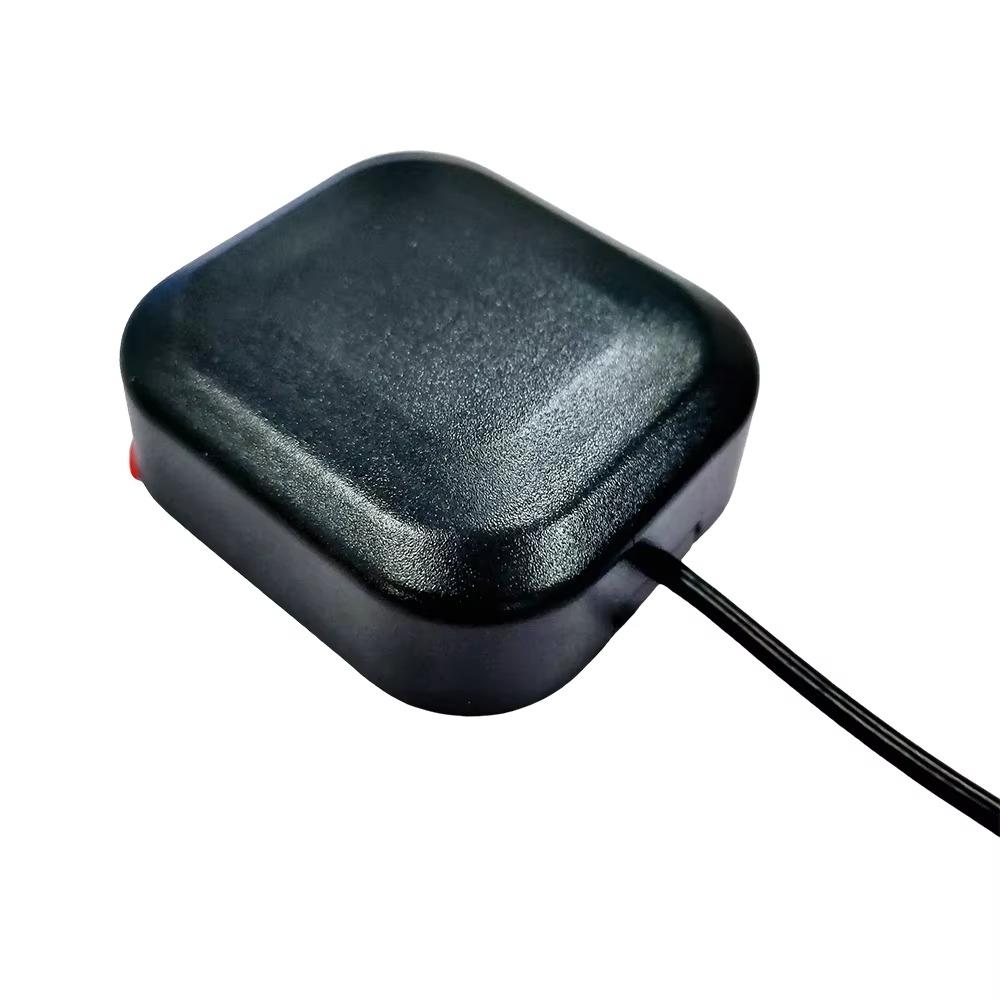Overview
1.1 Market Drivers and Growth
The global vehicle tracking market is projected to reach $14.5 billion by 2030, growing at a CAGR of 12.8% (2023–2030). Key drivers include:
Rising demand for fleet optimization in logistics and transportation.
Regulatory mandates for commercial vehicle tracking (e.g., ELDs in the U.S.).
Adoption of IoT and telematics in smart cities and connected vehicles.
Advancements in GNSS technology, enabling sub-meter accuracy via multi-constellation support (GPS, GLONASS, Galileo, BeiDou).
1.2 Role of Dual-Band WiFi GPS Antennas
Traditional vehicle tracking relied on standalone GPS antennas for positioning and separate cellular/WiFi modules for communication. However, modern systems demand integration, miniaturization, and multi-functionality to reduce costs and improve reliability. Dual-band WiFi GPS antennas address this by:
Combining GPS/GNSS (1.1–1.6 GHz) and WiFi (2.4/5 GHz) in a single package.
Supporting real-time data upload (e.g., GPS coordinates, sensor readings) via WiFi.
Enabling over-the-air (OTA) firmware updates and remote diagnostics.
Reducing PCB space and power consumption compared to multi-antenna setups.
1.3 Key Specifications
A typical dual-band WiFi GPS antenna for vehicle tracking includes:
Frequency Bands:
GPS: L1 (1575.42 MHz), L2 (1227.60 MHz), L5 (1176.45 MHz).
WiFi: 2.4 GHz (2400–2483.5 MHz), 5 GHz (5150–5850 MHz).
Gain: 2–4 dBi for GPS, 3–6 dBi for WiFi.
Polarization: Right-hand circular (RHCP) for GPS, linear for WiFi.
Impedance: 50 Ω.
Size: Compact form factors (e.g., 30 x 20 x 5 mm) for easy integration.
1.4 Notable Examples
Taoglas GSA.884-2450: Combines GPS/GLONASS with 2.4/5 GHz WiFi in a 50 x 30 x 10 mm package.
Pulse W3540: Supports GPS/BeiDou and dual-band WiFi with a peak gain of 4 dBi.
Antcom G8-2X-WiFi: High-precision GPS L1/L5 with 2.4 GHz WiFi for autonomous vehicles.
This overview sets the stage for a deeper exploration of the design, operation, and future of dual-band WiFi GPS antennas in vehicle tracking.
Design and Construction
The design of a dual-band WiFi GPS antenna must balance performance, size, cost, and environmental robustness to meet the demands of automotive applications.
2.1 Antenna Architecture
Dual-band antennas typically use one of two configurations:
Stacked Patch Design:
Separate GPS and WiFi radiators stacked vertically on a high-dielectric substrate (εr = 20–90).
Example: The Antcom G8-2X-WiFi uses a stacked patch for GPS L1/L5 and a parasitic element for 2.4 GHz WiFi.
Multi-Feed Monopole/PIFA:
A single radiator with multiple feed points for GPS and WiFi bands.
Example: The Pulse W3540 employs a meandered monopole with dual feeds for GPS and WiFi.
2.2 Material Selection
Dielectric Substrate:
High-εr ceramics (e.g., BaTiO₃, ZrTiO₄) minimize antenna size by reducing the effective wavelength.
Low-loss tangents (tanδ < 0.001) ensure high efficiency (>70%).
Conductive Layers:
Copper or silver plating for low-resistance RF paths.
Gold plating for corrosion resistance in harsh environments.
Enclosure:
IP67-rated housings (e.g., ABS plastic with rubber gaskets) protect against dust and water ingress.
UV-resistant coatings prevent degradation from sunlight exposure.
2.3 Key Components
GPS Section:
Patch Antenna: Circularly polarized (RHCP) to maximize satellite signal reception.
LNA (Low-Noise Amplifier): Boosts weak GPS signals (−130 dBm) while rejecting out-of-band noise.
WiFi Section:
Dual-Band Radiator: Supports 2.4 GHz (ISM band) and 5 GHz (UNII bands) for high-speed data transfer.
PIFA (Planar Inverted-F Antenna): Compact design with tunable resonance via shorting pins.
Matching Network:
LC circuits or transmission lines tune the antenna to 50 Ω for optimal RF module compatibility.
Shielding:
Metalized layers or conductive gaskets isolate GPS and WiFi sections to prevent interference.
2.4 Integration Challenges
Proximity Effects: Placing GPS and WiFi antennas too close can cause coupling, degrading signal quality.
Solution: Spatial separation (≥λ/4) or electromagnetic shielding.
Thermal Management: High-power WiFi transmissions (e.g., 23 dBm) can heat the ceramic substrate, shifting its resonant frequency.
Solution: Thermally conductive adhesives or heat sinks.
Mechanical Stress: Vibrations and shocks in vehicles require ruggedized designs with strain relief connectors.
2.5 Manufacturing Techniques
Laser Direct Structuring (LDS): Enables 3D antenna geometries on plastic housings for improved performance.
Flexible Printed Circuits (FPC): Used for low-profile, bendable antennas in tight spaces.
Surface-Mount Technology (SMT): Automated assembly reduces costs for high-volume production.
Working Principles
Understanding the operation of dual-band WiFi GPS antennas requires analyzing how they receive and transmit signals across two distinct frequency ranges.
3.1 GPS/GNSS Reception
Signal Acquisition:
Satellites transmit right-hand circularly polarized (RHCP) signals at L1 (1575.42 MHz), L2 (1227.60 MHz), and L5 (1176.45 MHz).
The antenna’s RHCP design ensures consistent reception regardless of satellite orientation, minimizing multipath errors from reflections (e.g., buildings, ground).
Carrier-Phase Tracking:
High-precision applications (e.g., RTK positioning) use L1/L2/L5 carrier signals to achieve centimeter-level accuracy.
Noise Filtering:
The LNA amplifies weak GPS signals (−130 dBm) while rejecting out-of-band interference (e.g., cellular/WiFi harmonics).
3.2 WiFi Communication
Frequency Bands:
2.4 GHz (ISM Band): Longer range but prone to congestion (e.g., microwaves, Bluetooth).
5 GHz (UNII Bands): Higher throughput (up to 1.3 Gbps) but shorter range and poorer penetration.
MIMO Support:
Some antennas integrate 2x2 MIMO for dual-stream WiFi, doubling data rates (e.g., 802.11ac/ax).
Time Division Duplexing (TDD):
Used in 5 GHz bands to alternate between upload and download for efficient spectrum use.
3.3 Signal Isolation Techniques
Spatial Separation: GPS and WiFi radiators are placed ≥λ/4 apart (e.g., 4 cm for 1.5 GHz GPS) to reduce coupling.
Filtering:
Bandpass Filters: Reject out-of-band noise (e.g., LTE signals interfering with GPS).
Notch Filters: Suppress specific harmonics (e.g., 2.4 GHz WiFi harmonics at 4.8 GHz).
Shielding:
Conductive layers or via fences block electromagnetic interference (EMI) between GPS and WiFi sections.
3.4 Example Workflow in a Vehicle Tracking System
The GPS section receives signals from satellites and calculates the vehicle’s position.
The WiFi section transmits this data (along with sensor readings from accelerometers, gyroscopes, etc.) to a cloud server via a nearby access point.
The server processes the data and sends commands back to the vehicle (e.g., route updates, maintenance alerts).
Advantages and Challenges
-
Dual-band WiFi GPS antennas offer significant benefits but also face technical and operational hurdles.
4.1 Advantages
Compact Size: Combines two antennas into one, saving PCB space and reducing costs.
Multi-Functionality: Enables real-time tracking, OTA updates, and remote diagnostics via WiFi.
High Precision: Supports multi-constellation GNSS (GPS, GLONASS, Galileo, BeiDou) for global coverage and sub-meter accuracy.
Low Power Consumption: Suitable for battery-powered applications (e.g., trailer tracking with 5+ years of battery life).
Rugged Design: IP67-rated enclosures withstand harsh automotive environments (vibration, shock, temperature extremes).
4.2 Challenges
Interference Risk: Close proximity of GPS and WiFi elements can cause desensitization if not properly isolated.
Solution: Advanced shielding and filtering techniques.
Thermal Detuning: High-power WiFi transmissions may heat the ceramic substrate, shifting its resonant frequency.
Solution: Thermal management materials (e.g., graphite sheets, heat sinks).
Limited Bandwidth: Ceramic antennas struggle to cover ultra-wide bands (e.g., 5G mmWave) without performance degradation.
Solution: Hybrid designs combining ceramic with PCB antennas for 5G support.
Environmental Sensitivity: Humidity and dust can degrade ceramic properties over time.
Solution: Hermetic sealing and conformal coatings.
Regulatory Compliance: Must meet strict standards (e.g., FCC, CE, IC) for RF emissions and safety.
Solution: Pre-certified modules from reputable suppliers.
Applications and Future Trends
-
Dual-band WiFi GPS antennas are transforming vehicle tracking across industries, with emerging trends pointing toward even greater integration and intelligence.
5.1 Current Applications
Fleet Management:
Logistics companies use GPS/WiFi antennas to track truck locations, fuel consumption, and driver behavior in real time.
Asset Tracking:
High-value cargo (e.g., pharmaceuticals, electronics) is monitored via GPS and WiFi-enabled sensors to prevent theft or damage.
Autonomous Vehicles:
Self-driving cars rely on high-precision GPS for navigation and WiFi for V2X (Vehicle-to-Everything) communication.
Public Transportation:
Buses and trains use GPS/WiFi antennas for real-time scheduling and passenger Wi-Fi hotspots.
Insurance Telematics:
Usage-based insurance (UBI) programs track driving habits (speed, braking) via GPS and WiFi for personalized premiums.
5.2 Future Trends
5G Integration:
Next-gen antennas will add sub-6 GHz 5G support for ultra-low-latency applications (e.g., remote vehicle control).
AI-Driven Optimization:
Machine learning algorithms will dynamically adjust antenna parameters (e.g., beam steering) to maximize performance in dynamic environments.
Quantum GNSS Sensors:
Quantum-enhanced receivers could achieve millimeter-level accuracy, revolutionizing surveying and construction.
Mass-Market Adoption:
Predicted 15% CAGR in automotive and IoT sectors will drive innovations in low-cost, high-volume manufacturing (e.g., $1 antennas for smart tags).
Edge Computing:
Onboard processing will reduce latency by analyzing GPS/WiFi data locally before uploading to the cloud.
Conclusion
Dual-band WiFi GPS antennas are a cornerstone of modern vehicle tracking systems, enabling precise positioning and seamless wireless communication in a compact, rugged form factor. Their integration of advanced materials, multi-band support, and signal isolation techniques addresses the industry’s demand for reliability, performance, and cost-efficiency.
While challenges like interference and thermal management persist, trends such as 5G integration, AI optimization, and quantum sensing promise to overcome these barriers, unlocking new applications in autonomous vehicles, smart cities, and industrial automation. As the automotive sector continues its shift toward connectivity and autonomy, manufacturers must prioritize innovation in antenna technology to ensure seamless interoperability between navigation, communication, and sensing systems.
The future of vehicle tracking lies in the convergence of GPS, WiFi, 5G, and emerging technologies, paving the way for safer, smarter, and more sustainable transportation solutions. Dual-band WiFi GPS antennas will play a pivotal role in this transformation, driving the next generation of connected vehicles and intelligent infrastructure.




































































 Language
Language
 En
En Cn
Cn Korean
Korean

 Home >
Home > 







 18665803017 (Macro)
18665803017 (Macro)













